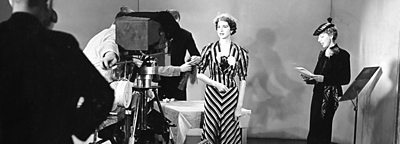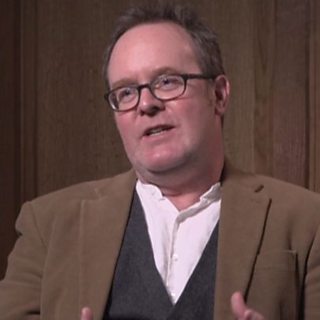By the late-1920s Baird’s backers were pressing the ����ý to offer its support to their fledgling television business. But the picture quality they’d achieved was still underwhelming. In September 1928, the Baird Company put on a full-scale demonstration for representatives from the ����ý and the Post Office, in which Baird’s regular dummy’s head was used as the on-screen model. One witness said:
The impression was of a curiously ape-like head, decapitated at the chin, swaying up and down in a streaky stream of yellow light… Not even the collar or tie were visible, the effect being more grotesque that impressive.
Despite the poor images, the Baird Company were in a rush to get some sort of service up-and-running so that people might start buying their receivers. It wanted access to the ����ý’s existing medium-wave transmitters to carry its own experimental TV signals. The ����ý resisted. It pointed out that, even with the existing low-definition pictures, the Baird TV tests would hog so much of the wavelength’s capacity that there’d be no room left for any of its own regular radio broadcasts.
The Post Office leaned on the ����ý to reconsider, and in 1929, rather grudgingly, the Corporation relented. A series of regular ‘experimental broadcasts’ using ����ý transmitters began from the end of September. However, as the ����ý engineer, Tony Bridgewater – then still working for Baird – explains, these test transmissions had some pretty peculiar features:
Baird himself calculated there were fewer than a hundred viewers – or ‘lookers-in’, as they were then called – for these early, crude test transmissions. But incremental improvements came. From March 1930, the ����ý was able to synchronize sound and image. Baird’s company also started marketing the technology vigorously, even arranging for the Prime Minister, Ramsey MacDonald, to have one of its ‘televisor’ receivers installed in Downing Street.
Yet the ����ý suspected Baird’s mechanical system offered a false prospectus because it was rapidly approaching the limit of its potential. It scanned only 30 lines – not nearly enough to create even a half-decent picture. It also continued to rely on medium wave transmitters.
Given that the number of listeners to radio nationally was already in the millions, the ����ý believed that sacrificing these licence-fee payers’ pleasure or edification so that a few hundred well-heeled viewers in London could watch some pretty ropey pictures seemed not only an expensive diversion, but a betrayal of the ����ý’s public service values. After all, as Reith had stated, the ����ý’s basic mission was “the greatest good for the greatest number”.
One of the key ����ý engineers working on the experimental TV service at this time was Harold Bishop. In his interview for the ����ý Oral History Collection, Bishop describes how an alternative way forward emerged:
For now, the ����ý continued to work with Baird. It set up a “Television Committee” to assist in planning, and set aside a studio in the basement of its brand-new central London headquarters, Broadcasting House, for its six-days a week experimental television broadcasts. Programmes became steadily more adventurous, occasionally featuring dancers, comedians, or performing animals.
By 1932, the ����ý probably had more programme-making experience in TV than any other broadcaster in the world. However, it also faced severe financial difficulties. The economic depression of the early-1930s meant that, for now, anything spent on television would have to come from the ����ý’s existing resources for radio. As another key ����ý engineer from this era, James Redmond, explained in his recorded interview for the ����ý Oral History Collection, this issue of resources within a financially constrained era was one often-forgotten factor shaping the Corporation’s initial resistance to television:
The electronic ‘cathode-ray tube’ system developed by the Marconi-EMI partnership offered many more pictures per second as well as images made of 405 lines – a dramatic improvement on Baird’s 30-line system. It also used ultra-short wave VHF wavelengths, rather than the medium wavelengths used by existing radio services. These facts alone meant it had greater potential in the long-term. In the short-term, however, several thousand people had by now either bought or built receivers designed for the Baird system, which also happened to be making modest improvements to its own picture-quality.
By 1933, the ����ý knew that Marconi-EMI’s electronic model was “immeasurably superior”, and tried to extricate itself from Baird’s embrace. But when, in 1934, the Government appointed a Committee to determine the future of television - the so-called Selsdon Inquiry – it concluded not only that it was the ����ý that should formally launch a regular service but also that it should do so using both the new electronic system and Baird’s now slightly-improved mechanical system.
Although the ����ý had been quick to decide that the rather dilapidated Alexandra Palace building in North London was a better bet than Crystal Palace as a physical base for its television operations, there was much more to be done before a regular service could be launched. The next task was to gather together a team of dedicated staff who knew how to work the equipment and then start to work out what on earth would will fill the broadcast hours.

